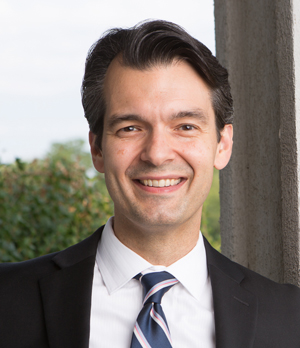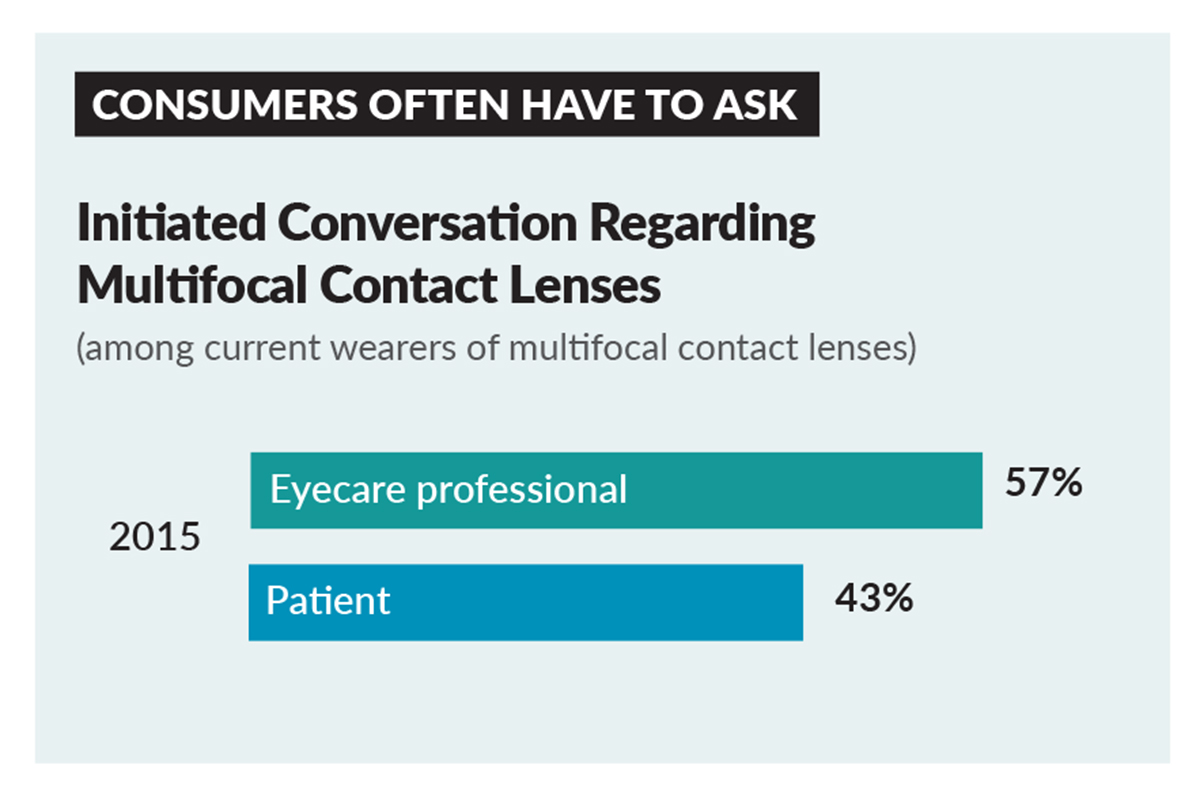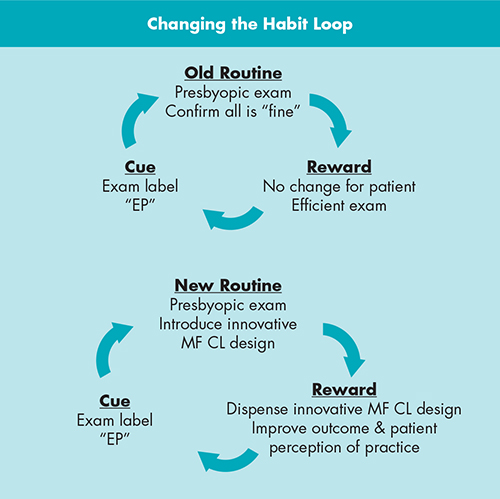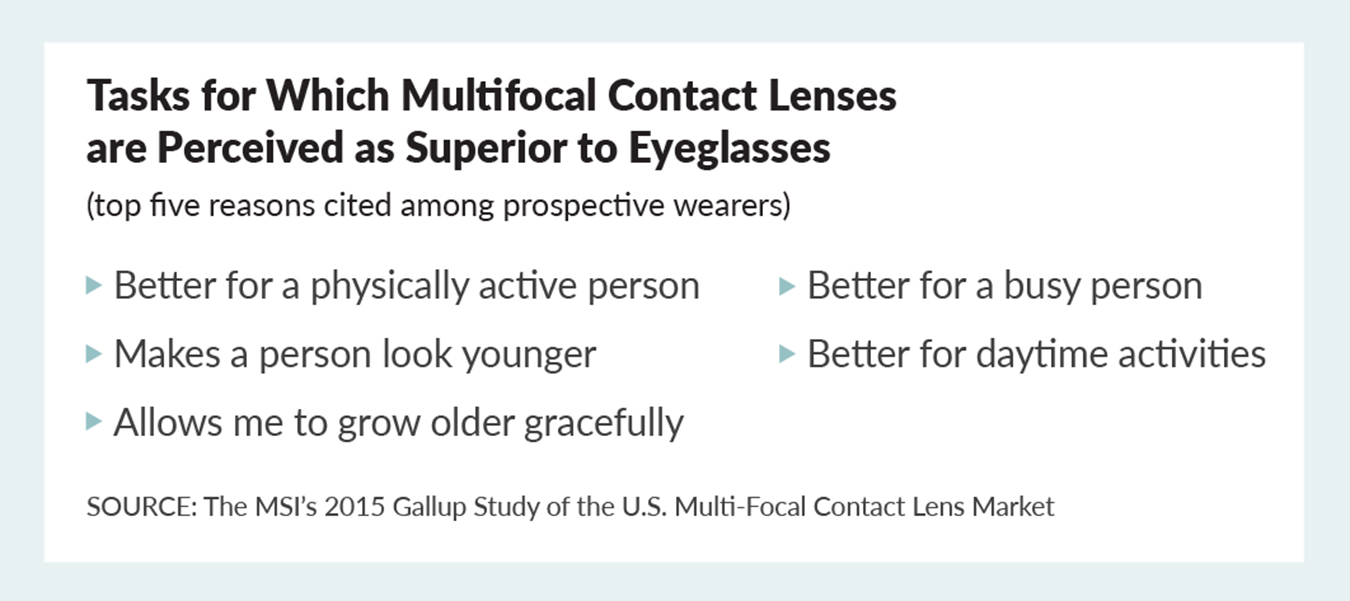
Replace Procedural Habits with Innovative Habits
By Mile Brujic, OD
At our practice, we welcome presbyopic patients because we believe we can provide them with excellent near, intermediate and distance vision, given the technology at our disposal.
This wasn’t always the case. Recently, innovative multifocal contact lens designs became available that provide high levels of success in both vision and comfort. However, through an assessment of our behavior, we found that we had established habits in processing patients that promoted efficiency and organization at the expense of letting our patients know their full options for presbyopic correction.
Often, presbyopic patients come into our practice believing that they have limited options when it comes to vision correction. Many presbyopes who are new to our practice aren’t even aware of multifocal contact lenses designed to provide excellent near, intermediate and distance vision. Time after time, we bypass opportunities to initiate discussions regarding innovations in product technology to our patients, or we simply assume that these patients are satisfied with their current vision correction.
A recent survey among current wearers of multifocal contact lenses shows that, nearly half the time, it is the patient, and not the eyecare professional, who initiates a conversation about multifocal contact lenses.

Source: The Multi-sponsor Survey’s 2015 Gallup Study of the U.S. Multi-Focal Contact Lens Market
Categorization limits how we view patients and present options
A few years ago, I came to the realization that our office wasn’t doing an effective enough job explaining all of the various options to our presbyopic patients. What held us back were habits designed to efficiently process patients through their office visit, but which limited presentation opportunities to address our patients’ changing lifestyle and vision needs.
Our practice uses an electronic health record system that categorizes a patient as an “NP” (new patient) or “EP” (established patient). The system further categorizes a contact lens wearer as a “CL.” So, if we saw “EP” on a presbyopic patient’s chart, with no “CL,” we simply assumed they had no interest in contact lenses. Further, if we saw “CL” on the patient’s chart and all appeared “fine,” we assumed the patient was not interested in an opportunity for an improved outcome.
Creating labels created habits. Our habits shortened wait times and exam times, and patients appeared to leave satisfied with their vision correction. But could we give them something better?
Breaking the habit loop
We could, if we broke this habit loop. In this habit loop (see top illustration below), the cue to our habit was categorization at intake, and the routine was to confirm that all was “fine” with the current status of the patient. The reward was an efficient patient journey through our office—but did we meet the needs of the patient if we failed to present a full range of vision correction options?

This point was driven home when I was examining an “EP” patient and, at the conclusion of the exam, I asked if they had any questions. I was totally unprepared when they said, “Yes. Can I wear contact lenses?”
This patient’s simple question made me realize I had subconsciously gotten into a habit routine of assuming patients were happy with what we were prescribing them.
Establishing more satisfying habits
Being efficient and staying on time can be a powerful reward in the day-to-day operations of a practice. However, analyzing our routines and adjusting rewards (see bottom illustration above) helped to move our office to a more satisfying place. By adjusting the reward to address the patient’s lifestyle and vision needs, we analyzed our routines for both “EP” and “CL” patients. Then we made plans to change routines to deliver more satisfying rewards. By changing some of our firmly established habits, our practice team has become more proactive at offering innovations in contact lenses to both “EP” and “CL” patients.
Understand lifestyles and motivations. We shouldn’t make presumptions about presbyopes. If they only wear eyeglasses, be open to presenting today’s innovations in multifocal contact lenses as an option that will fit their lifestyle. Prospective wearers believe that multifocal contact lenses are better for physically active people, make a person look younger, and allow a person to age gracefully (see chart below). By understanding the perspectives of “EP” wearers and the individual lifestyles of the patient, we improved communications that connect with motivations for a patient’s vision correction. Our office team is geared to engage presbyopic patients in conversations about their lifestyle and the functionality of their current vision correction. In addition, we actively integrate discussions of innovative technology such as 3-Zone Progressive™ design multifocal contact lenses that we have found deliver exceptional results for the active lifestyles of presbyopic patients.

In the course of changing our habits, we have gone beyond our initial efficiency goals and believe we are raising the level of care we provide and improving the satisfaction level of our patients. By increasing opportunities to discuss innovative technology, we find we are doing a better job of meeting the lifestyle and vision needs of our patients—and that, we find, is highly satisfying to both our patients and our practice.
Mile Brujic, OD, practices at Premier Eyecare in Bowling Green, Ohio. To contact him: brujic@prodigy.net.
UFP.0217.USA.16





















